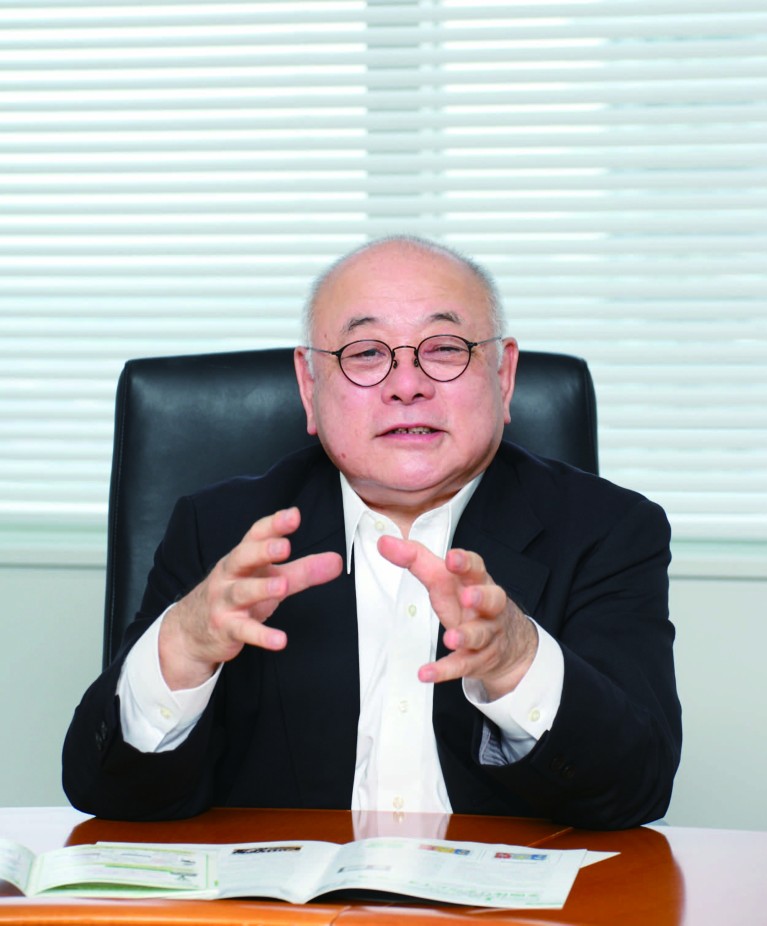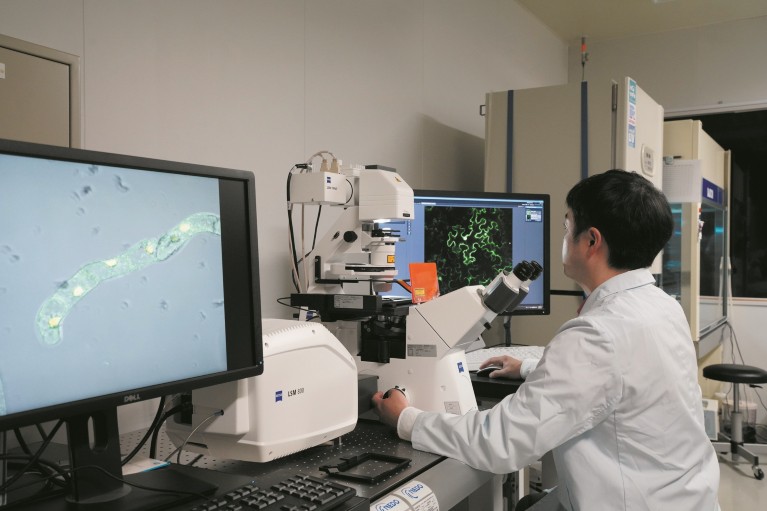In Japan, harnessing the power of microbes is nothing new. Staples, including soy sauce, some pickles, sake and miso, are all produced using fermentation. And Japan already has one of the largest probiotics markets in the world.
Tomohisa Hasunuma, who leads microbial research for one of Japan’s largest biotechnology research efforts, the Smart Cell Project, says its long history with fermentation puts Japan in a leading position for the chemistry of the future: engineering plants and microbes to produce the base materials for everything from drugs to fuels, a major goal in the field of synthetic biology.
Global consulting firm McKinsey reported in May 2020 that biology could ultimately produce 60% of the physical inputs to the global economy. Such conclusions are underlined by a report from the European Commission suggesting the European Union could replace roughly 30% of products derived from petroleum by 2030, using biotechnology.

FERMENTATION, which, among other things, is used to make glutamate to create umami in Japanese soups, is a key production process for microbes.© sunabesyou/Shutterstock
Bioeconomy future
A global ‘bioeconomy’ driven, at least partly, by biology-based production is perhaps only a decade away, according to John Cumbers, a Silicon Valley investor and former synthetic biologist at NASA’s Ames Research Center.
He points to Spiber, a Japan-based start-up that is fermenting microbes to produce synthetic material designed to emulate the durability and flexibility of spider silk. “The advantage here is that the performance properties are better than silk,” explains Cumbers. Working with American outdoor recreation outfitter, The North Face, the Smart Cell Project-funded Spiber produced the first commercially available jackets using the synthetic silk late last year.

In 2018, the European Commission detailed bioplastics research as part of an environmentally sound ECONOMIC INVESTMENT STRATEGY. Satoru Kuhara agrees that bioeconomies will be more sustainable. Satoru Kuhara leads the Smart Cell Project.Courtesy of NEDO
Satoru Kuhara, who works for the Japanese innovation funder, the New Energy and Industrial Technology Development Organization (NEDO), leads the Smart Cell Project. He says the bioeconomy movement is driven by both economic and environmental imperatives.
Bioplastics, for example, can minimize the role of petroleum in production and then break down into water and carbon dioxide when exposed to microorganisms in soil.
The Japanese corporation, Mitsubishi Chemical, already uses microbes to help produce a substitute for polyethylene, one of the most widely available plastics in the world, often formed into shopping bags and long sheets of mulch film for agricultural purposes. To produce the bioplastic, gene-edited bacteria ferment biological material, and help to create one of the base materials used to make the bioplastic polymer polybutylene succinate.

Classic targets of Japan’s fermentation research include CENTRAL METABOLITES, such as glutamate and succinate. Polybutylene succinate is a useful bioplastic.© eNjoy iStyle/Shutterstock
Biofoundry test bed
Bioplastics, however, have not yet replaced traditional plastics globally. Biology-based products, explains Cumbers, often have to compete with trillions of dollars of investment in petroleum-based infrastructure.
While there are more than 400 synthetic biology product start-ups in the United States, the numbers across Asia are still fairly low. A number of Smart Cell Project-funded labs, including a biofoundry at the Engineering Biology Research Center at Kobe University, will help address this by speeding up proof-of-concept work for companies. The Kobe-based biofoundry is filled with new, automated research tools that have been in development since 2016 through the Smart Cell Project. To date, 40 companies have partnered on development.
One example of the new technology powering the foundry is based on the work of Kenji Tsuge, who published in Scientific Reports in 2015 on a system that assembles an unprecedented number of DNA fragments (more than 50) in one step.
The Smart Cell Project has since automated the insertion of this system into cells. Enabling the introduction of a large amount of DNA in one action has addressed a longstanding need for faster and more accurate DNA editing to create new functions in living cells, explains Kuhara.

LIVING FACTORIES: In the short-term, microbes will likely drive biological production. Even though plants produce more than a million kinds of secondary metabolites, Takeshi Matsumura explains that engineering plant cells is more complex. He thinks that big data on plant metabolic pathways will help construct key artificial pathways in microbes. Japanese researchers are also developing tools to turn on and off gene expression in plant cells (above) for productivity gains.© Hiroshi Masumoto
Other innovations include machine-learning tools capable of identifying useful biosynthesis pathways; an automated pre-treatment system for metabolomic analysis; and, an enzyme engineering analysis system to improve production titers. Research on new engineering tools continues, adds Kuhara.
At the biofoundry, Hasunuma’s team has already started work on some widely useful compounds, including alkaloids such as reticuline, which can be used to produce pain medication.
In 2019, Hasunuma’s group improved alkaloid titers by more than 10-fold by narrowing a metabolic pathway in Escherichia coli using new enzyme shortcuts. He says that the alkaloids are now being produced at almost commercially viable levels.
Hasunuma’s ambitious goal is “being able to produce anything”. While that’s some way off, he thinks the biofoundry will provide viable, scalable, biology-based production systems to partners within two years. The hope, he says, is that this evidence-based development, a strong fermentation research foundation, and a general momentum will push Japan into a leadership position in the global bioeconomy.



 Collection: Focal Point on Synthetic Biology in Japan
Collection: Focal Point on Synthetic Biology in Japan
 Improved gene-editing precision to boost Japan's bioeconomy
Improved gene-editing precision to boost Japan's bioeconomy
 The productive plant switch
The productive plant switch
 Giving the green light to useful plant genes
Giving the green light to useful plant genes
 Designer metabolic pathway for sustainable aromatics
Designer metabolic pathway for sustainable aromatics
 Yeast rises to the omega-3 challenge
Yeast rises to the omega-3 challenge
 A systematic approach to scaling up synthetic biology
A systematic approach to scaling up synthetic biology
 Breakthrough in bio-based production of longevity vitamin, ergothioneine
Breakthrough in bio-based production of longevity vitamin, ergothioneine